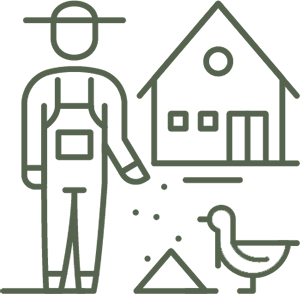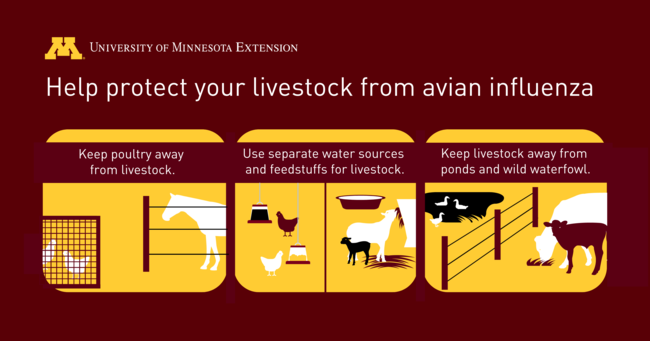UPDATED JUNE 2024
Highly Pathogenic Avian Influenza (HPAI), also known as bird flu, avian influenza, or H5N1, is a severe and highly contagious disease caused by the avian influenza virus A (H5N1).

This virus is frequently spread with wild birds such as ducks and geese during their migrations. When HPAI infects domestic poultry, including chickens and turkeys, it is highly contagious and deadly, often wiping out entire flocks in just a few days.
Traditionally, HPAI primarily affects birds and some mammals. However, for the first time in U.S. history, there have been detections of Influenza A (H5N1) infections in livestock, including dairy cows.
Since April 2022, 11 human cases of influenza A (H5N1) have been confirmed, involving four dairy workers and seven poultry workers after exposure to infected animals. In June and July 2024, avian influenza was confirmed in dairy herds in Minnesota and Iowa among several other states in the U.S.
The overall risk to the public remains low. However, individuals who handle or care for infected animals, such as poultry or cattle, could be at an increased risk of getting sick.
This ongoing situation emphasizes the importance of biosecurity on the farm and ongoing monitoring to control the spread of H5N1 HPAI and protect both animal and human health.
HPAI TOOLKIT
UMASH has prepared a toolkit to help poultry farmers enhance prevention with biosecurity protocols, identify the signs and symptoms of HPAI in birds, and stay connected to additional resources from USDA – APHIS and state departments of agriculture.
HUMAN INFECTION
Avian (bird) influenza (flu) A viruses, including A (H5N1), do not usually infect humans. However, there have been some rare cases of human infection with these viruses mainly through unprotected, direct physical contact or close exposure with sick or dead birds, and infected animals (including, recently, infected dairy cattle livestock).
-
Find more specific recommendations, like wearing proper PPE (personal protective equipment), for farmers; poultry, backyard flock, and livestock owners; and workers.
-
Read more about milk safety and supply during HPAI outbreaks.

“At this time, there continues to be no concern about the safety and availability of pasteurized milk products nationwide. Pasteurization has continually proven to inactivate bacteria and viruses, like influenza, in milk and is required for any milk entering interstate commerce.” – FDA
-
Learn more about HPAI in dairy herds in this USDA Q and A, and how to protect your livestock from avian influenza and what cattle and beef producers can do to reduce livestock and avian interaction with resources from University of Minnesota Extension.
Learn more from Dr. Jeff Bender

Explore further insights on Highly Pathogenic Avian Influenza (HPAI) through published articles and interviews featuring UMASH Director and University of Minnesota School of Public Health Professor, Jeff Bender, DVM, as he answers key questions about H5N1 among wild birds, poultry and dairy.
- Avian Flu on Dairy Farms: What Clinicians and Dairy Worker Patients Need to Know
April 17, 2024 – Migrant Clinicians Network - Bird flu affecting livestock spreads
April 5, 2024 – Ag Update’s Agri-View - Bird flu outbreak poses no risk to safety of America’s food supply, say experts
April 4, 2024 – ABC News - Bird flu confirmed in Texas worker who had contact with dairy cows
April 1, 2024 – NBC News - Avian flu detections in dairy cows raise more key questions
March 27, 2024 – Center for Infectious Disease Research & Policy (CIDRAP) - Avian influenza found in US dairy cattle
March 26, 2024 – Agriculture Dive - Talking Highly Pathogenic Avian Influenza with Jeff Bender
April 20, 2022 – University of Minnesota School of Public Health



 Avoid unprotected exposures to sick or dead animals including wild birds, poultry, other domesticated birds, and other wild or domesticated animals (including cattle), as well as with animal carcasses, raw milk, feces, litter, or materials contaminated by birds or other animals with confirmed or suspected HPAI A(H5N1)-virus infection.
Avoid unprotected exposures to sick or dead animals including wild birds, poultry, other domesticated birds, and other wild or domesticated animals (including cattle), as well as with animal carcasses, raw milk, feces, litter, or materials contaminated by birds or other animals with confirmed or suspected HPAI A(H5N1)-virus infection.
